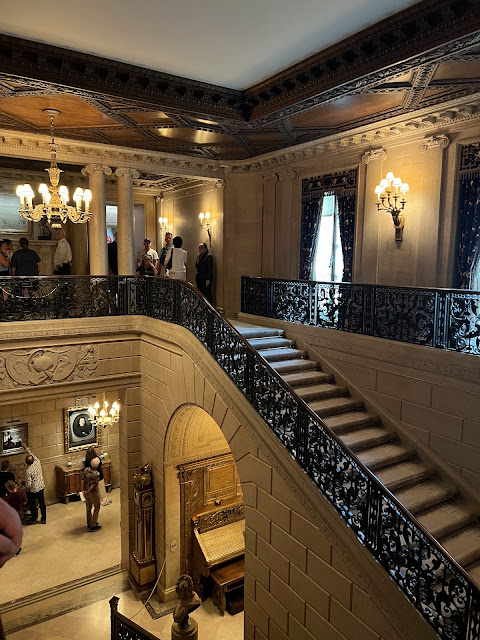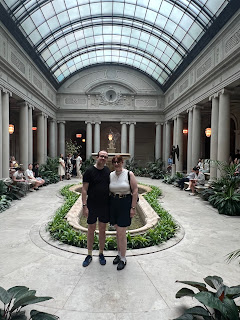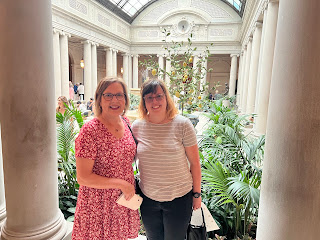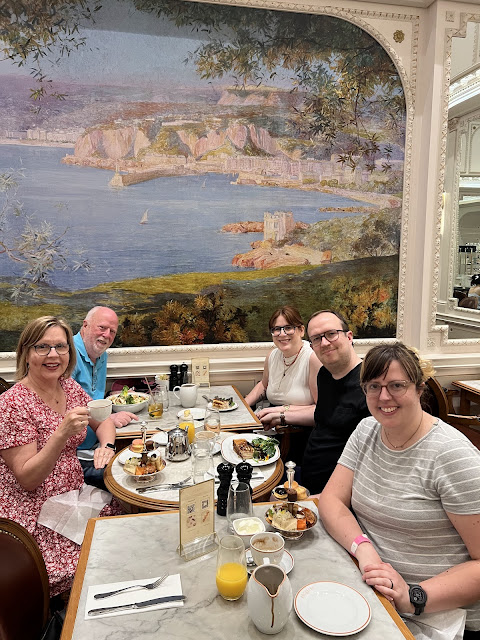 |
| Angelina's with the family in New York City |
Seventeen years ago, my husband, Chris, and I spent a memorable week in Paris celebrating our 25th wedding anniversary. Alongside the must-see landmarks every tourist checks off—the Eiffel Tower, Notre Dame, and the Louvre—our well-traveled friends insisted we visit Angelina's for tea. We did, and we especially fell for their blend of Earl Grey (which those same friends eagerly requested we bring back some for them, too).
Recently, we discovered that afternoon tea at Angelina’s is now possible a little closer to home. Our favorite New York couple, Matt and Jenna—who also fondly recall their own delightful experience at the original Paris location—had told us a few years ago that a new Angelina's tearoom had opened in Manhattan and that the offerings were just as delicious.
 |
| At Angelina's in Paris, 2008, celebrating 25th wedding anniversary! |
Last week, while in New York, our family made a nostalgic pilgrimage to Angelina’s in Bryant Park. We were thrilled to once again be surrounded by the rich décor and delectable tea treats that had enchanted us in Paris all those years ago.
Back in Paris, I had been captivated by Angelina’s ambiance: large murals, cream-colored walls and elegant moldings, and wood tables with marbleized tops. Yet what lingered most in my memory was the charm of the space and the gently aged patina of its furnishings.
 |
| Afternoon tea, small but reasonably priced. |
 |
| Each sweet and savory artfully presented! |
The New York location faithfully echoes the original with its French provincial flair—similar murals and leather-cushioned chairs adorn the space—but having opened in 2020, it gleams like a freshly minted coin. It will take a few decades to acquire the well-worn character of its century-old predecessor.
 |
| Two of three opted for Angelina's hot chocolate (see whipped cream accompaniment on table). |
According to their website, Angelina’s was founded in 1903 by confectioner Antoine Rumpelmayer, who named the tearoom after his beloved daughter-in-law. It quickly became the "epitome of French sophistication," attracting Parisian luminaries such as Marcel Proust and Coco Chanel (and, one hundred and five years later, your humble BTS blogger).
 |
| Lemon tart - as delicious as it is beautifully presented! |
During this visit to the NY Angelina’s, my daughter Rachel and I opted for the afternoon tea: an elegant array of sweets and savories served on a two-tiered silver tray. Though scones were absent, we were treated to a steaming pot of tea—naturally, I chose the Earl Grey. At just under $50 per person, it felt like a reasonable indulgence. The tea treats were beautifully presented and exceptionally flavorful.
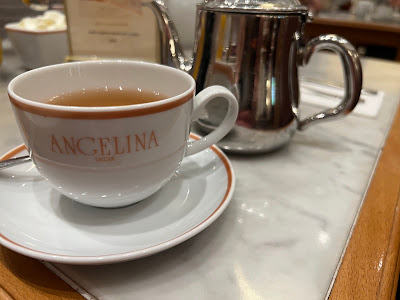 |
| Angelina's Earl Grey is the best! |
Chris chose a Caesar salad, while Matt and Jenna shared a croque monsieur and a lemon tart. A few in our party couldn’t resist Angelina’s legendary hot chocolate: warm, thick, and gloriously sweet.
 |
| Rachel purchasing chocolate mix, but no Earl Grey. |
To cap off our delightful visit, we stopped by the glass counter to purchase some Earl Grey to bring home, only to find it sold out. I told the gentleman behind the register that Angelina's Earl Grey is simply the best. He smiled and said, "I know—that’s why it’s sold out."
Mais bien sûr!
 |
| Angelina's in NYC's Bryant Park |
One thing we’re certain of—we’ll be back (for all the above!).




























